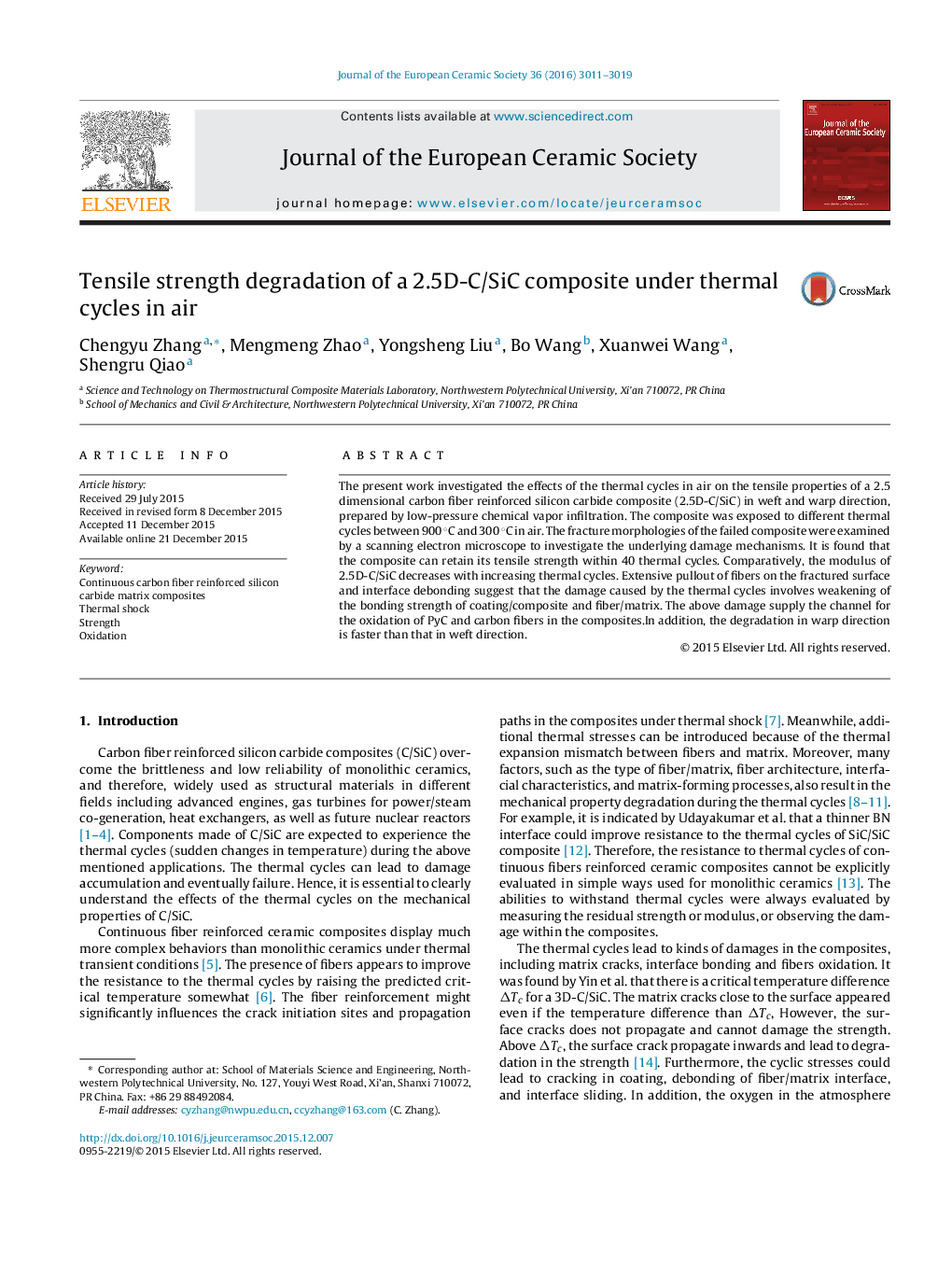| Article ID | Journal | Published Year | Pages | File Type |
|---|---|---|---|---|
| 1473533 | Journal of the European Ceramic Society | 2016 | 9 Pages |
The present work investigated the effects of the thermal cycles in air on the tensile properties of a 2.5 dimensional carbon fiber reinforced silicon carbide composite (2.5D-C/SiC) in weft and warp direction, prepared by low-pressure chemical vapor infiltration. The composite was exposed to different thermal cycles between 900 °C and 300 °C in air. The fracture morphologies of the failed composite were examined by a scanning electron microscope to investigate the underlying damage mechanisms. It is found that the composite can retain its tensile strength within 40 thermal cycles. Comparatively, the modulus of 2.5D-C/SiC decreases with increasing thermal cycles. Extensive pullout of fibers on the fractured surface and interface debonding suggest that the damage caused by the thermal cycles involves weakening of the bonding strength of coating/composite and fiber/matrix. The above damage supply the channel for the oxidation of PyC and carbon fibers in the composites.In addition, the degradation in warp direction is faster than that in weft direction.
